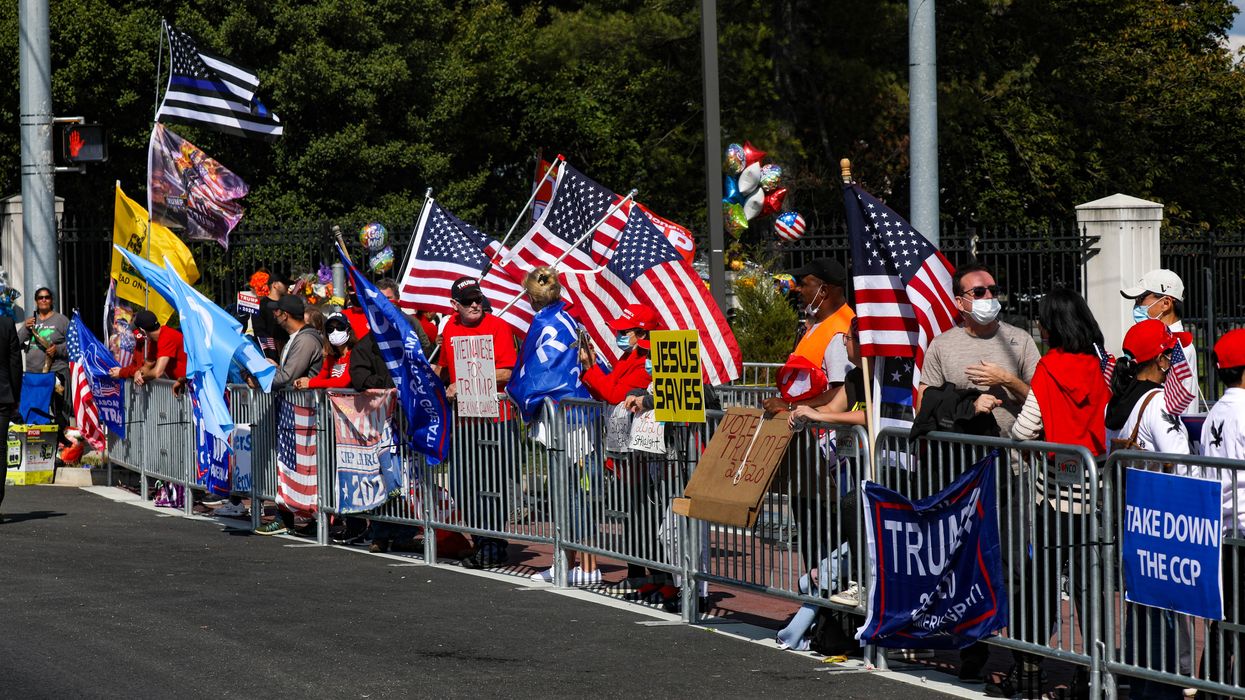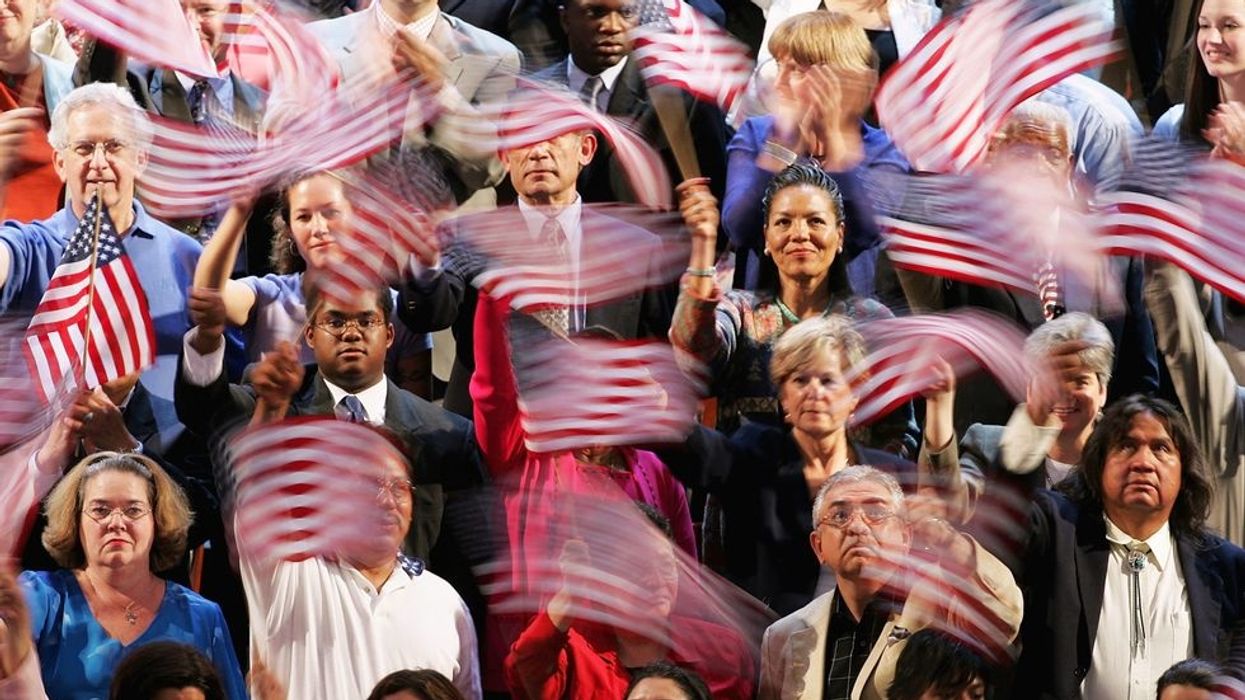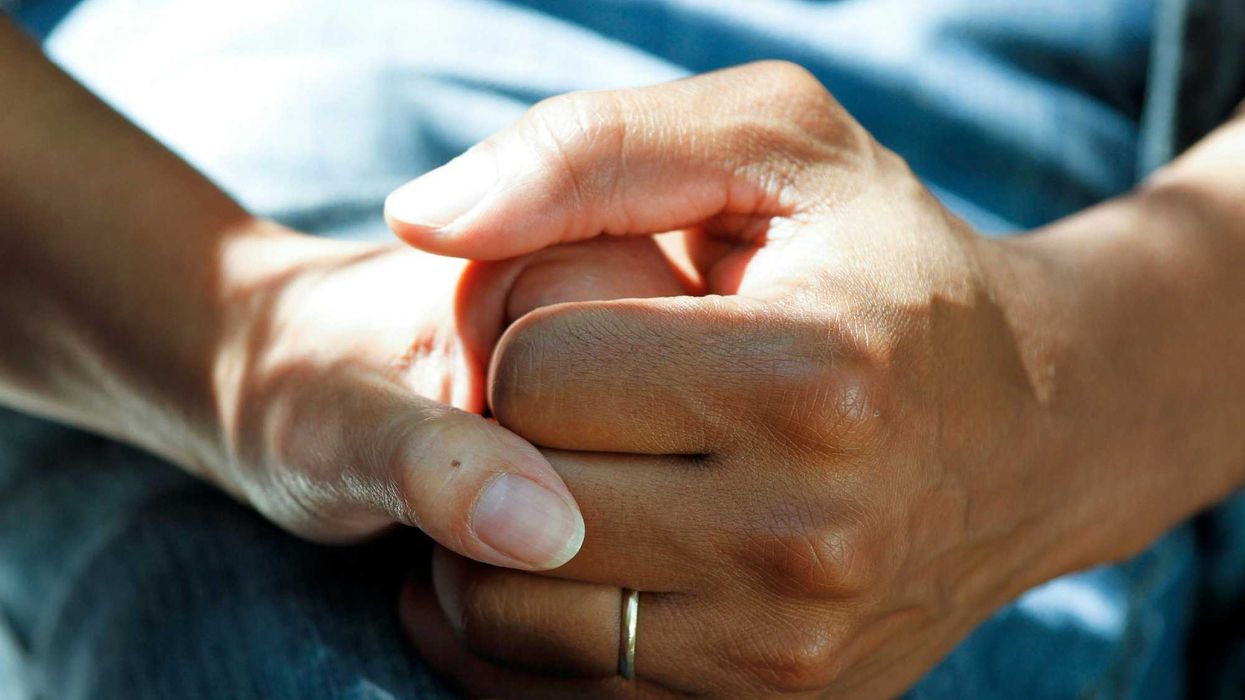President Trump's directive to his supporters "to go into the polls and watch very carefully" has magnified anxiety that the election will soon become marred by violence and voter intimidation.
Since exhorting his allies in last week's debate, the president has not offered more detailed instructions. So it's not altogether clear if he wants fans to go through the process of becoming official partisan observers, who get to be inside voting stations — or if he was encouraging boisterous rallies of loyalists outside thousands of schools and libraries nationwide.
Either way, unnerved voting rights advocates and election officials fear his vague but incendiary call to action will lead to disturbances and chaos. Beyond the confusion between poll watching (formal and strictly overseen) and electioneering (informal and less regulated) are worries about an Election Day imperiled by polarized clashes between the left and the right.
Answers to several questions may help the nation rise above the muddle the president has created, if not the anger.
The concerns come at a time of already immense stress for election officials, who are contending with how to run an election during a pandemic and seeking to reassure voters the democratic process remains safe, fair and transparent despite Covid-19 and the president's baseless assertions about massive vote fraud.
The executive director of the Lawyers' Committee for Civil Rights Under Law, Kristen Clarke, says her organization has quadrupled its cohort to 21,000 attorneys in preparation for potential legal battles waged over voting and the election.
"We are deeply concerned about the chilling effect that President Trump's statements may have on the electorate," she told reporters after the debate, adding that her group is "committed to making sure voters can participate in this process free of intimidation."
Three Democratic attorneys general from battleground states — Michigan, Nevada and Wisconsin — banded together to warn this week that anyone using tactics to scare away voters will be prosecuted.
"Intimidating voters to prevent them from casting a ballot is not only unacceptable — it's a felony," Wisconsin's Josh Kaul said. "Anyone who engages in that kind of illegal conduct should expect to be investigated and prosecuted."
At the same time, the Trump campaign is circulating training videos for the cadre of thousands of poll watchers it's hoping to deploy nationwide on Election Day. They emphasize rule-following, avoiding causing disruption and a focus on spotting suspicious behavior — not preventing the casting of legitimate ballots.
But they do not address the crowds of chanting Trump supporters who gathered at an early voting site in suburban Virginia last week.
To help understand the difference, here are answers to some of the most frequently asked questions.
Trump wants supporters to "go into the polls and watch very carefully." Is that legal?
Unless they are official poll watchers, no. Only election staffers and voters intending to cast a ballot are allowed inside polling stations while an election is ongoing.
So what is a poll watcher?
It's standard practice for political parties or candidates to enlist poll watchers to ensure ballots are being cast and counted properly. Partisan poll watchers are the most common type, but some states also authorize nonpartisan citizen observers, international observers and academic observers.
What is the poll watchers' job?
They observe Election Day activity at voting locations, including setup procedures before the polls open and onsite tabulating after they close, to ensure election administrators are complying with rules and regulations. While poll watchers can challenge a voter's eligibility, they cannot interfere directly with that voter. (Suspicions are reported to election administrators.) Poll watchers may also keep track of voter turnout for their political party.
Does every state allow poll watchers?
West Virginia is the only state that does not permit poll watchers of any kind while voting is in progress. Election officials are responsible for challenging voters.
Can anyone sign up to be a poll watcher?
Not necessarily. Forty states, plus D.C., have formal accreditation processes. Local party leaders, candidates or other political operatives can appoint observers, although in some cases the people must be approved by local or state election officials. Most states also require poll watchers to be registered voters. Law enforcement officers, candidates and their family members are often barred from serving as poll watchers.
How many poll watchers do states enlist for elections?
It varies, but generally one or two Republican and Democratic observers are allowed in each voting place. Some states require they wear badges identifying themselves.
Are poll watchers the same as poll workers?
No. Poll workers are trained (and in most cases, paid) temporary employees of the local election administrators. They help in the physical conduct of elections by setting up voting machines, checking-in voters and assuring they're registered, keeping the lines orderly, answering questions and passing out "I Voted" stickers.
What happens if a poll watcher, or somebody else, tries to interfere with a voter inside a polling place?
It is a federal crime to intimidate, threaten or coerce a person for the purpose of interfering with their right to vote. Many state laws also protect against voter intimidation. For more information about voter intimidation and how to report it, read this guide by the ACLU.
What about interfering outside?
Voter intimidation is forbidden inside or outside a polling location. It is also prohibited to interfere with or block voters in line or walking into a building to cast a ballot. However, beyond a certain perimeter outside of a polling location, electioneering is allowed.
What is electioneering?
The formal definition is audible or visible advocacy for or against a political issue, ballot measure or candidate. In other words, non-violent demonstration. Activity can include vocalizing political opinions or messaging, displaying campaign signs, waving flags or wearing candidate swag.
How close to a polling location can electioneering happen?
In 24 states, the electioneering perimeter is 100 feet from the door of a polling location. Thirteen states make people stand farther away — as far as 600 feet, in Louisiana. A dozen states allow electioneers to get closer, as close as 10 feet in Pennsylvania and New Hampshire. Vermont leaves it up to county officials to decide, and Washington does not specify a distance (although it might not be as much of an issue because the state conducts elections primarily by mail).
Can military or law enforcement officers be present at polling locations?
Although Trump has promised to do so if voter fraud occurs, it is illegal to deploy federal troops or armed officers to polling stations. State and local laws also limit the presence of law enforcement at the polls. The Brennan Center for Justice released a report this week outlining the roles law enforcement can and cannot play at the polls.
Need more help?
For answers to additional questions, or assistance if challenged when trying to vote, one option is calling the Election Protection hotline. It offers help in English, Spanish, Arabic, Bengali, Cantonese, Hindi, Urdu, Korean, Mandarin, Tagalog and Vietnamese.



















